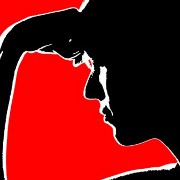Trigeminal neuralgia (also called tic douloureux) is a chronic painful condition involving the fifth cranial nerve, called the trigeminal nerve. The trigeminal is the largest sensory cranial nerve. It is responsible for sensations of touch, pressure, pain, and temperature in your cheeks, jaw, gums, forehead, and eye areas. While this is not a life-threatening condition, it is so painful that some people actually become depressed and suicidal if they cannot get relief.
The symptoms of trigeminal neuralgia can be confused with migraine, toothache, and many other problems that cause facial pain, making it tricky to diagnose. Most commonly the pain is unilateral, sudden, recurrent, extreme, and burning or shock-like. It may last only seconds or a couple of minutes, but the pain is severe enough to be mentally and physically incapacitating.
Trigeminal neuralgia pain is provoked by everyday activities such as brushing your teeth, shaving, talking, drinking or even exposure to wind. Over time you may begin to avoid anything that might provoke the pain. People who suffer long term may avoid leaving the house altogether. As the condition progresses, attacks often become more severe and more frequent and the time between attacks shortens.
According to the National Institute of Neurological Disorders and Stroke, trigeminal neuralgia is presumed to be caused by a blood vessel pressing on the nerve. This can often be seen on MRI. It is important to look for the cause, because the treatment is dependent on the cause. It is most common in people over 50, more common in women than men, and approximately two to three percent of patients with trigeminal neuralgia have multiple sclerosis.
Treatment often begins with anticonvulsant medications that are thought to decrease nerve hyperactivity. People often require more than one medication to get relief. Sometimes this means more than one type of anticonvulsant, or the addition of a tricyclic antidepressant or even surgery. Typical pain medications such as narcotics or opioids do not usually relieve the pain of trigeminal neuralgia. Complementary modes of treatment may involve acupuncture, biofeedback, nutritional therapy, relaxation and guided imagery exercises, or electrical nerve stimulation.
Trigeminal neuralgia is an extremely painful and frustrating problem, but with proper diagnosis and treatment, it can often be controlled. Surgical interventions result in 80 percent of patients pain free at one year, and 50 percent at five years, according to the American Association of Neuroscience Nurses. If you think you have symptoms of this condition, see a neurologist.
Resources:
American Chronic Pain Association
http://www.theacpa.org/default.aspx
American Pain Foundation
http://www.painfoundation.org/
National Foundation for the Treatment of Pain
http://www.paincare.org/
TNA: The Facial Pain Association
http://www.endthepain.org/
Sources:
National Institute of Neurological Disorders and Stroke: Trigeminal Neuralgia Information Page
http://www.ninds.nih.gov/disorders/trigeminal_neuralgia/trigeminal_neuralgia.htm
Bader MK & Littlejohns LR. (2004). AANN Core Curriculum for Neuroscience Nursing (4th Ed.). St. Louis, Saunders.





Add a Comment4 Comments
My attacks began at age 14, nearly 38 years ago, in September 1972. Most recent diagnoses are Atypical Trigeminal Neuralgia and Migraines, which have different symptoms but may be related origin. My TN episodes are always R. sided Mandibular area and can last a few days, with several attacks per month. Another term sometimes used is Atypical Facial Pain. Mine could have been trauma-induced from football, which I played the year my episodes began. -JQT-
June 29, 2010 - 9:09amThis Comment
The offending vessels are rarely seen om MRI or MRA because they are on such a microscopic level. It is most often seen in patients over 50 BUT there are many people in their 20s or 30 and children with this horrible disorder.
June 23, 2010 - 6:34pmThis Comment
Thank you for your comment. According to the AANN:
"MRI scans using three-dimensional volume acquisitions with contrast and thin cuts (.08 mm)
Vessels compressing the trigeminal nerve are visualized on MRI 80% of the time".
You are correct that it is most often in people over 50, more women than men, but can be seen at any age.
Thanks again for reading.
June 24, 2010 - 6:41amThis Comment
I have never heard of this condition. I wonder if many people are misdiagnosed? This is probably why it's a good idea to ask "What else could it be?" when seeing a physician about a problem. Thanks for the article!
June 23, 2010 - 12:58pmThis Comment